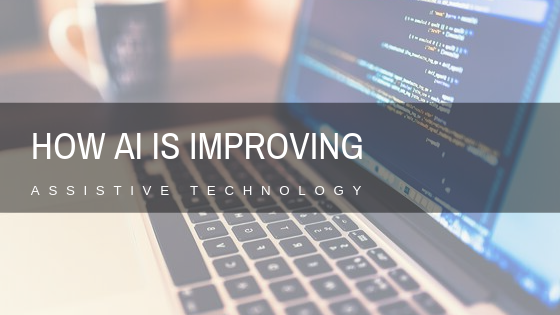Assistive technology is an AI-based solution that helps people and businesses save time and simplifies processes. Many businesses have adopted forms of assistive technology, such as automation, in their operations to increase efficiency. Ultimately, automation and robotics are becoming more sophisticated and are playing an increasing role in the workplace in many operations. However, a lesser-known function for AI is how it is improving and advancing assistive technology for individuals with disabilities.
AI for Medicinal Purposes
One of the areas where AI has developed rapidly is the medical industry, as physicians can now track patients through electronic medical devices. Smart devices are helping save lives by alerting medical professionals in emergency situations. AI-based devices can track heart rate, blood pressure, and many other physical processes of patients. Robots can be programmed to assist individuals with disabilities with certain tasks like making emergency calls or reminding a patient to take medication.
Communicative Assistance
Many new developments are in the works to help improve communication among individuals with disabilities. A highly accurate device that converts sign language into text or voice makes communication easier between those with and without hearing impairments. A 3D camera tracking body movement is also revolutionizing the possibilities of AI. Assistive technology can potentially change someone’s life at a personal and professional level.
Smart Glasses and Hearing Aids
Some of the innovations on the horizon for assistive technology include smart glasses and cognitive hearing aids. Augmented reality glass enhances a certain component of sight, developed by Google, which has been working on smart glass projects throughout the decade. Cognitive hearing aids that track brain waves are now on display at Columbia University School of Engineering.
Other AI Applications
There are several other AI applications in the medical industry, many of which relate to wearables. University of Houston researchers are currently testing a biofeedback rehabilitation wearable, which consists of a belt made of vibrating actuators. These actuators are sensors that map out real-movement of the individual wearing the belt. By collecting and analyzing data on a daily basis, the system can monitor behaviors associated with Parkinson’s Disease.
Assistive learning is focused on improving the quality of life for individuals with a variety of disabilities. Innovative ideas ushered in by AI technology allow for a growing range of solutions that these individuals did not experience prior to the development of wearables. In the future, we expect many new opportunities for assistive technology advances with the help of AI devices.
